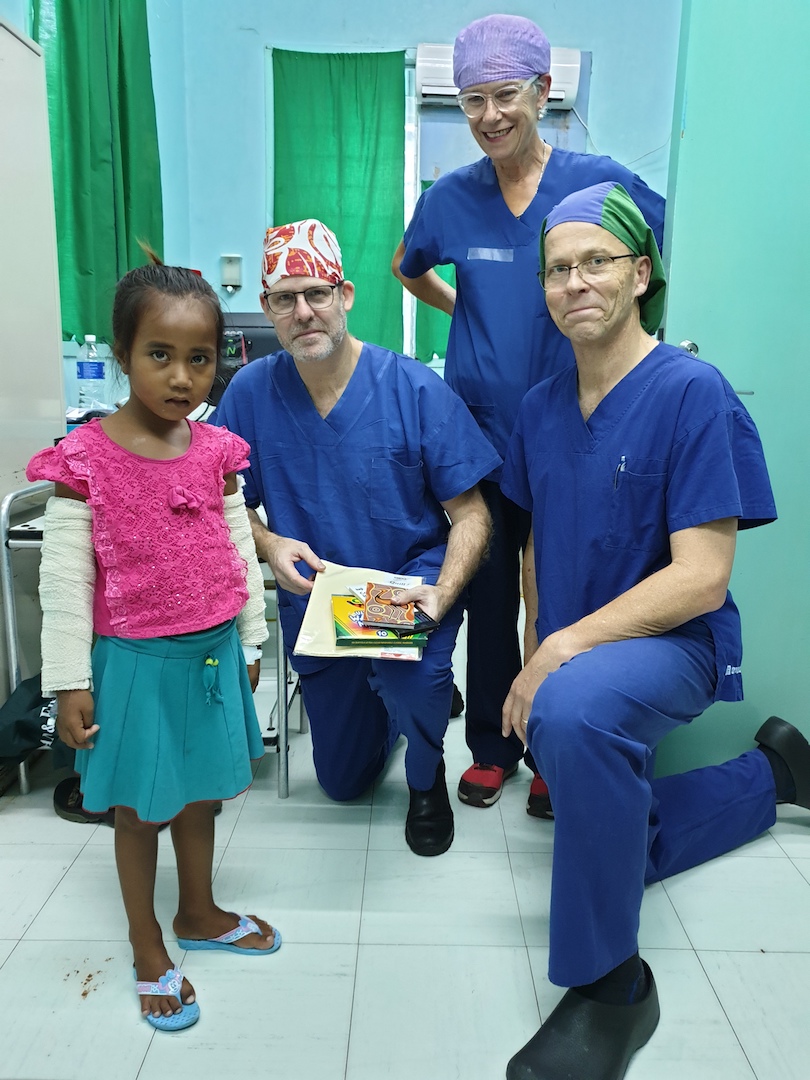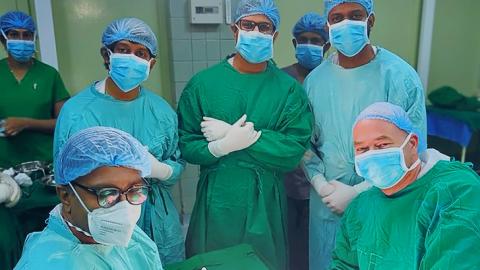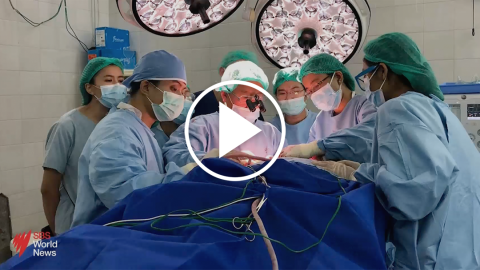
Teue is a six-year-old girl who lives with her family on Nonouti island, Kiribati, which is approximately 250km south of Tarawa, the capital of Kiribati.
An Interplast surgical team recently visited Tarawa and saw 49 patients in collaboration with partner hospital Tungaru Central Hospital.
Interplast volunteer nurse Gillian Suter explained that Teue was born with a cleft palate.
“When Teue was younger, her father Bokia was worried about her undergoing surgery as he believed she would be OK with her condition,” Gillian said.
“However, as she got older and started school other children teased her about having a hole in her mouth.”
Teue had difficulty speaking and would get frustrated when she could not communicate with the other children at school.
A medical assistant visiting Nonouti island met with Teue and Bokia and told them about the visiting Interplast surgical team. The medical assistant encouraged Bokia and Teue to attend the Interplast clinic at Tungaru Central Hospital.
Gillian reported that the Interplast surgical team were able to successfully repair Teue’s cleft palate.
“The team last saw the little girl on the morning ward round on the day Teue and her family went home to Nonouti island,” Gillian said.
“Teue was excited about going home to play with her friends and eating.”
Teue’s outlook is good and she will start learning new ways of speaking once her palate has healed.
Photo: Teue is pictured receiving books from the volunteer surgical team (from left) Robert Gates, Gillian Suter and David Barker. Her arms have been splinted to help protect her stitches.
A cleft palate is a birth condition caused by the baby’s mouth tissues not joining up during early foetal development. The two halves of the palate do not fuse properly, leaving an open space or ‘cleft’. The World Health Organization reports that oral clefts in any form (i.e. cleft lip, cleft lip and palate, or isolated cleft palate) occur in one in every 500-700 births world-wide. Babies born with cleft palates and/or cleft lips often have problems with feeding and speaking clearly and can have ear infections. The children might also have hearing problems and problems with their teeth.




